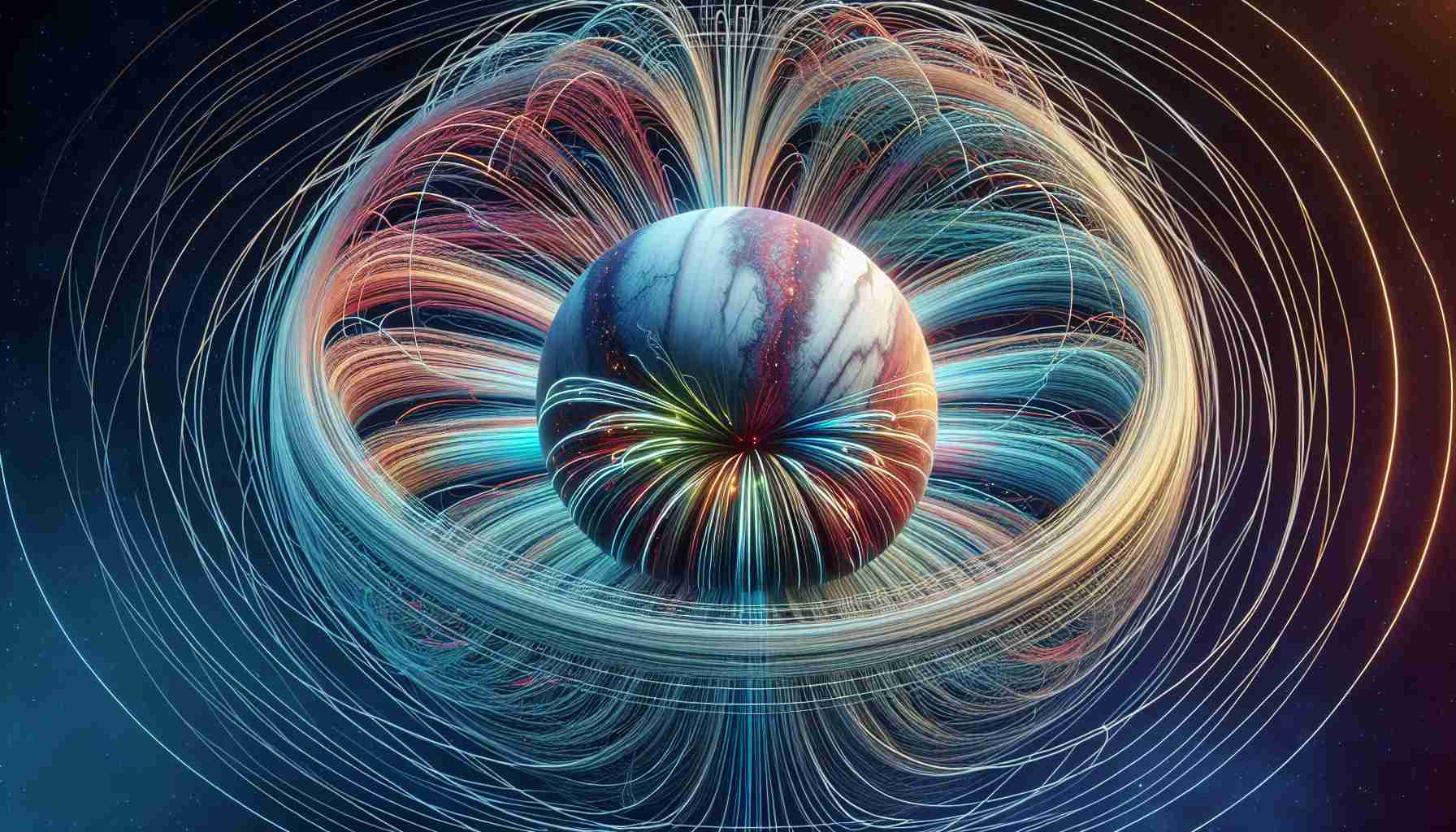Unveiling a Distorted Magnetosphere
Upon revisiting the Voyager 2’s flyby data of Uranus, scientists have unveiled unexpected revelations regarding the planet’s magnetic field. It appears that the spacecraft encountered Uranus during an abnormal and compressed state of its magnetosphere, skewing our understanding of the planet’s magnetic environment.
The Influence of Solar Winds
The solar wind, a stream of charged particles emitted by the Sun, plays a crucial role in shaping a planet’s magnetosphere. During Voyager 2’s passage, the solar wind exerted unusually high pressure, compressing Uranus’ magnetic field to atypical levels. This rare occurrence occurred less than 5% of the time, significantly impacting the spacecraft’s observations.
The Enigma of Radiation Belts
One of Voyager 2’s startling observations was the existence of highly intense radiation belts encircling Uranus. The recent study suggests that the field compression may have temporarily amplified these radiation belts, offering a partial explanation to this enduring mystery.
Implications for Future Explorations
These new insights challenge previous assumptions drawn from Voyager 2’s flyby. As the spacecraft witnessed an exceptional moment, current models of Uranus’ magnetosphere may not accurately portray its standard state. To unravel these mysteries, scientists advocate for a new mission to Uranus that would provide a more comprehensive and precise understanding under varied solar wind conditions.
Lessons Learned
The reevaluation of Voyager 2’s encounter with Uranus serves as a poignant reminder in both scientific inquiry and everyday life: drawing definitive conclusions from a singular experience can be misleading. Just as first impressions of a person can be deceptive, circumstances can distort perception. The Voyager 2 captured Uranus during a peculiar moment, highlighting the dynamic and complex nature of planetary environments. Patiently accumulating more data and embracing the evolving nature of our surroundings is crucial, emphasizing the importance of thorough investigation before forming conclusions.
Unveiling Uranus’ Magnetic Mysteries
As researchers delve deeper into the enigmatic world of Uranus, a host of intriguing questions surface, demanding answers that could reshape our perception of this distant planet. What other surprising truths lie hidden within Uranus’ magnetic field, awaiting discovery? How do these revelations alter our understanding of planetary magnetospheres as a whole?
Deciphering Anomalies
Beyond the unexpected distortions revealed by Voyager 2’s flyby, what other anomalies may exist within Uranus’ magnetic field that remain elusive to us? Could there be undiscovered forces at play, shaping the planet’s magnetosphere in ways yet to be comprehended? Unraveling these mysteries poses a tantalizing challenge for scientists seeking to unveil the full extent of Uranus’ magnetic complexities.
Unraveling Radiation Phenomena
The revelation of intense radiation belts surrounding Uranus raises further questions about the planet’s magnetic dynamics. How do these radiation belts interact with the unusual magnetospheric conditions observed during Voyager 2’s encounter? Exploring the intricate interplay between magnetic fields and radiation patterns presents a fundamental puzzle in our quest to grasp Uranus’ magnetic domain.
Advantages and Disadvantages of New Discoveries
The newfound insights into Uranus’ magnetic field offer a valuable opportunity to refine existing models and theories, shedding light on the diversity of planetary magnetospheres. However, these discoveries also pose challenges in reconciling the discrepancies between expected behavior and observed anomalies. Navigating this delicate balance between innovation and validation is essential in progressing our understanding of Uranus’ magnetic realm.
Key Challenges and Controversies
One of the primary challenges associated with reimagining Uranus’ magnetic field lies in distinguishing between temporary fluctuations and enduring features within its magnetosphere. The dynamic nature of planetary magnetic fields introduces complexities that may confound straightforward interpretations. Unraveling these intricacies demands a multifaceted approach that integrates diverse data sources and analytical techniques.
Suggested Links for Further Exploration:
– NASA: Stay updated on the latest planetary missions and discoveries.
– Space.com: Explore in-depth articles on Uranus and magnetospheric phenomena.












